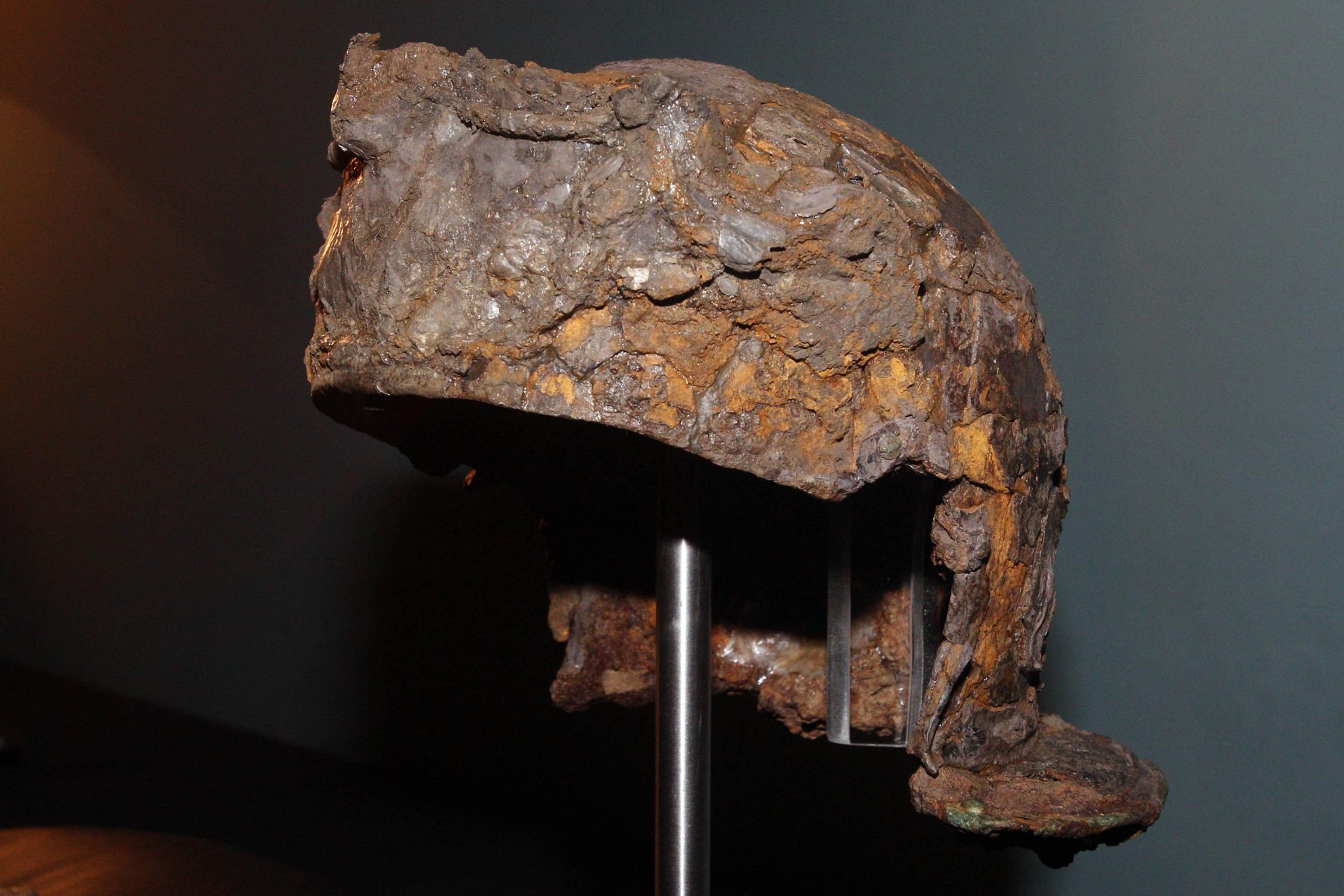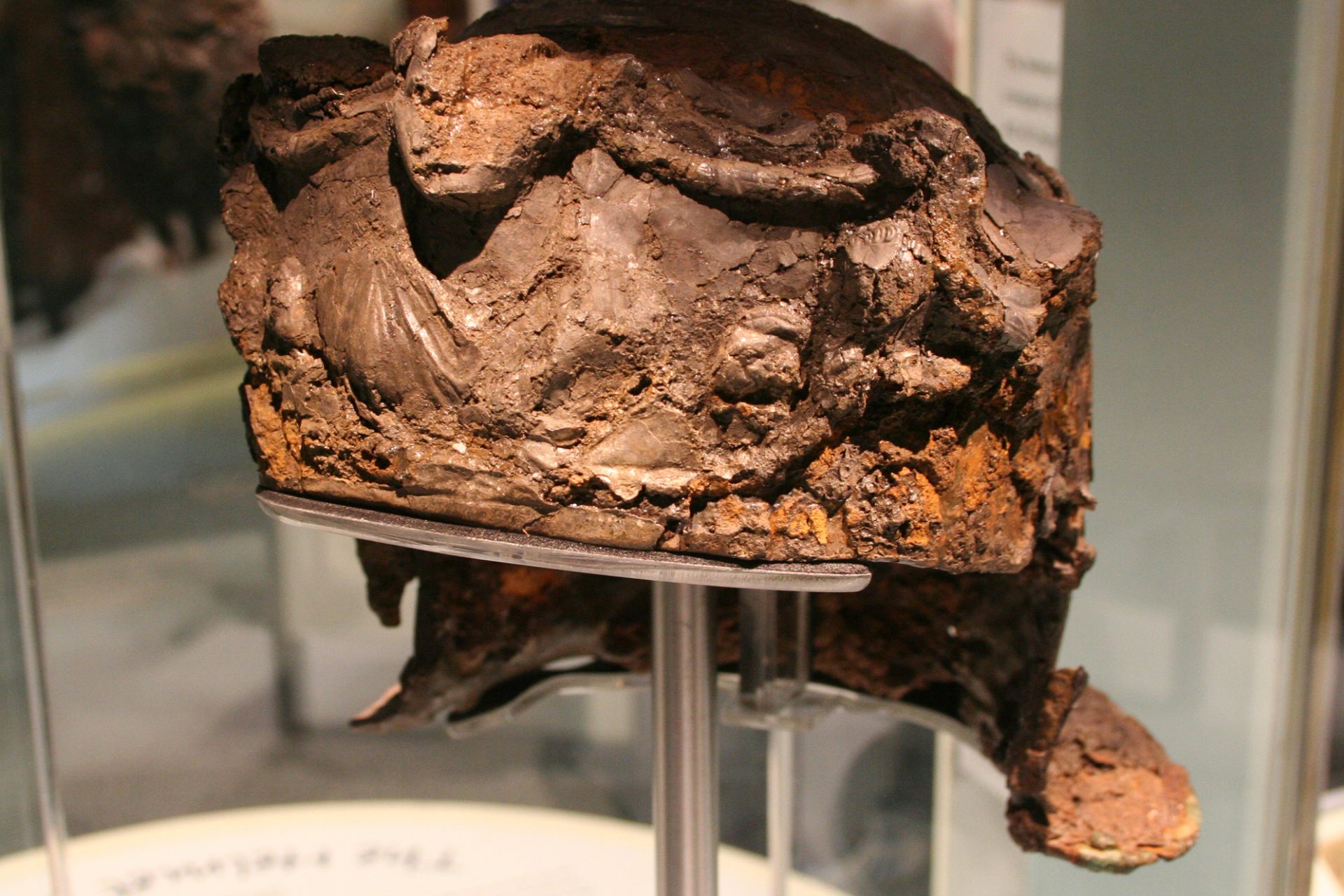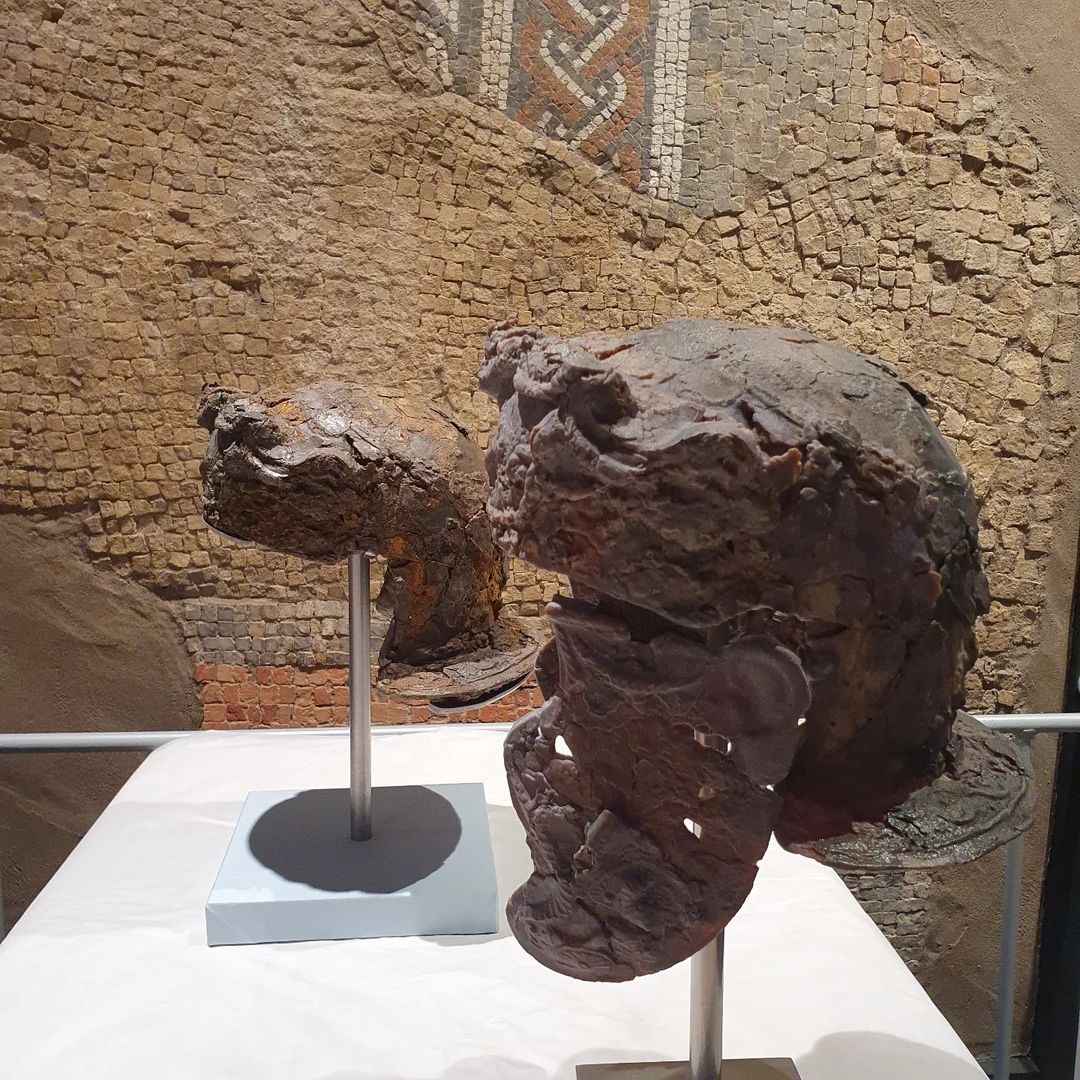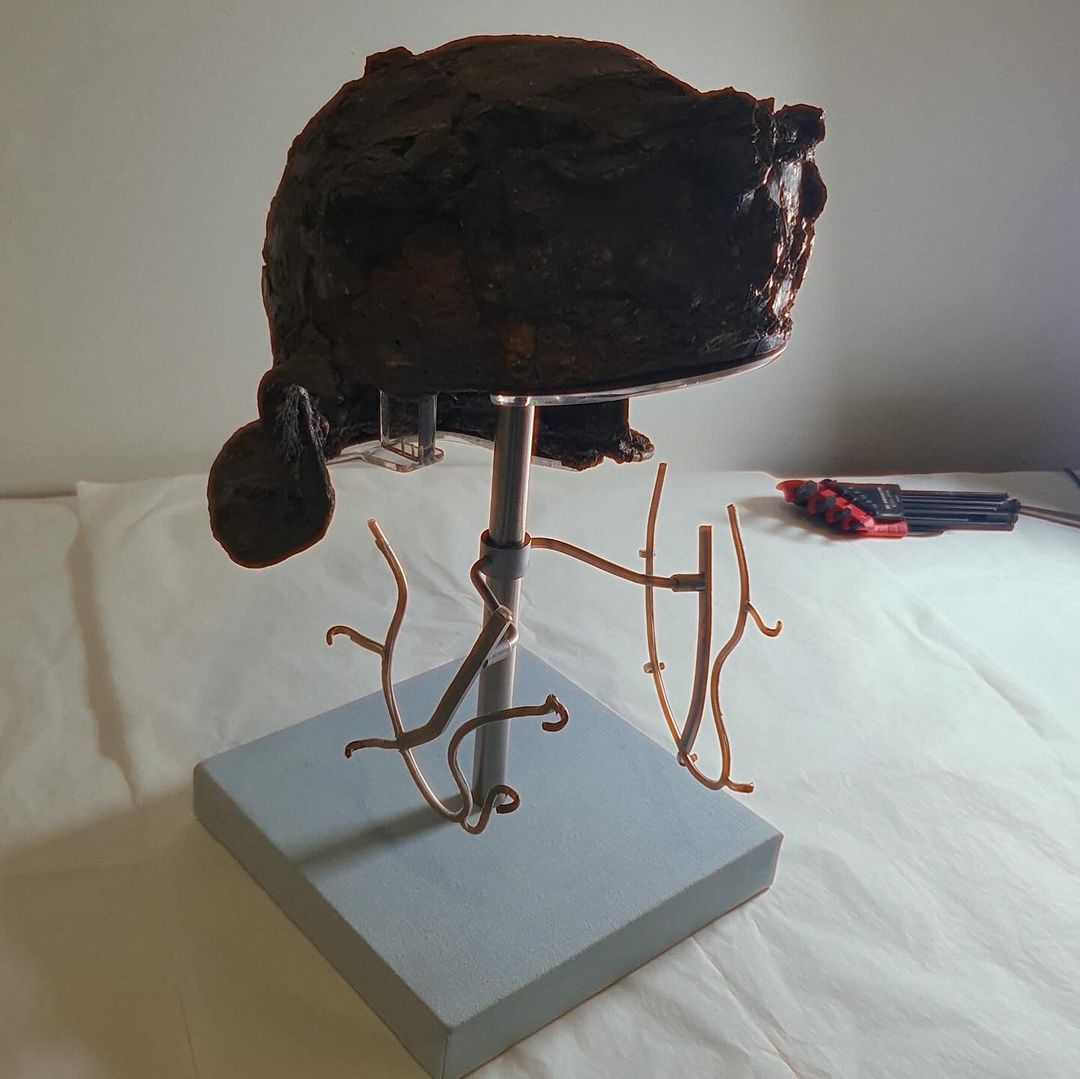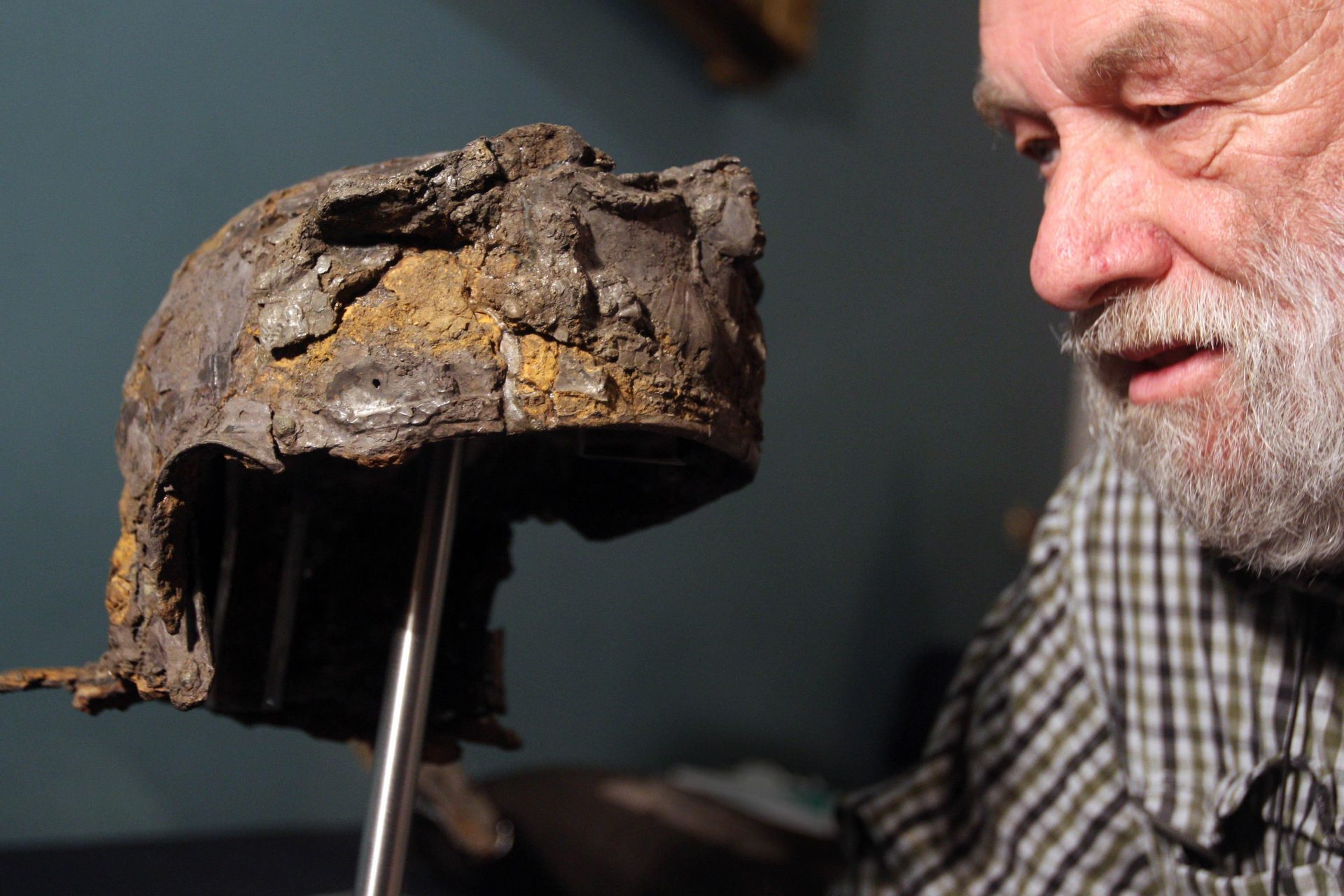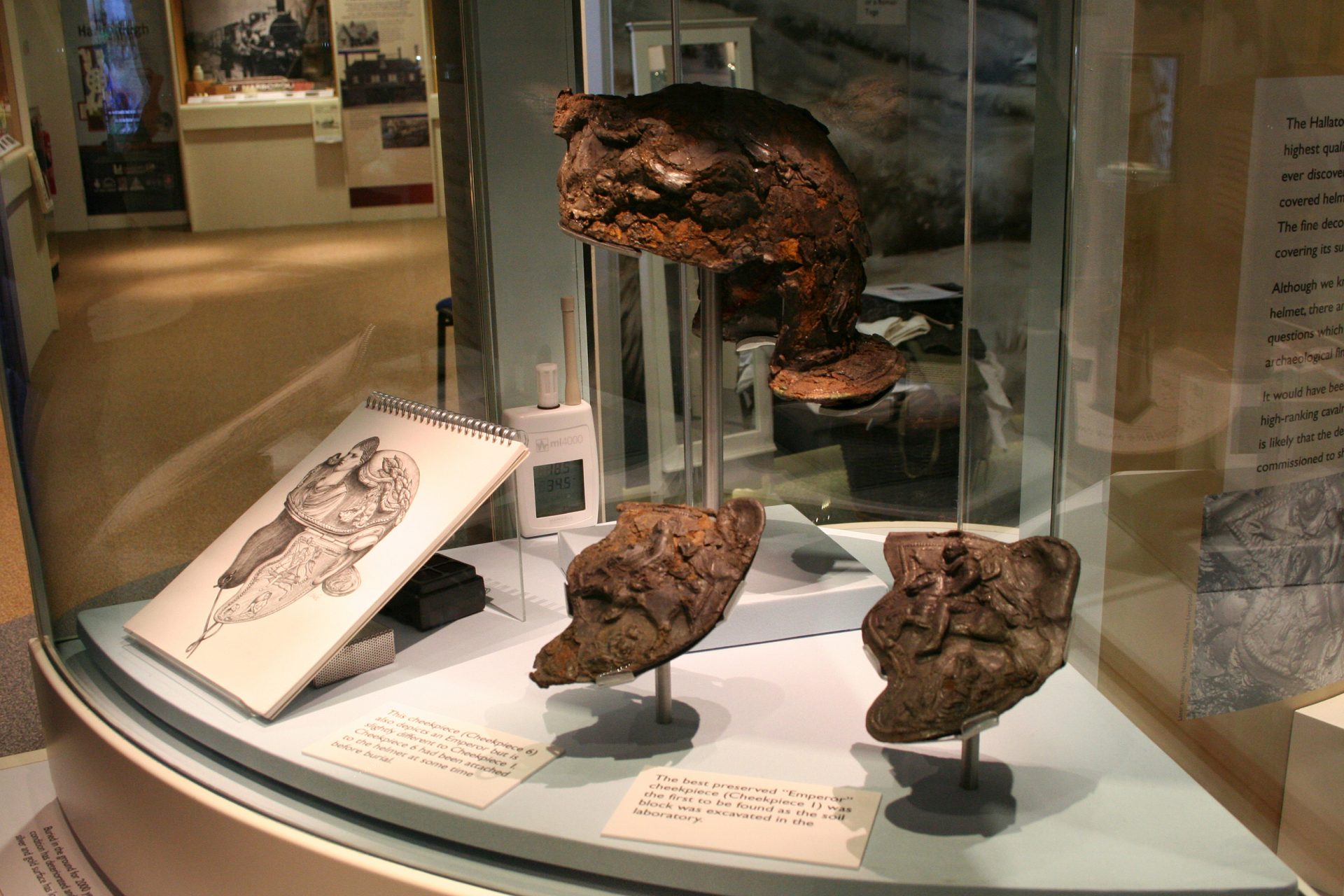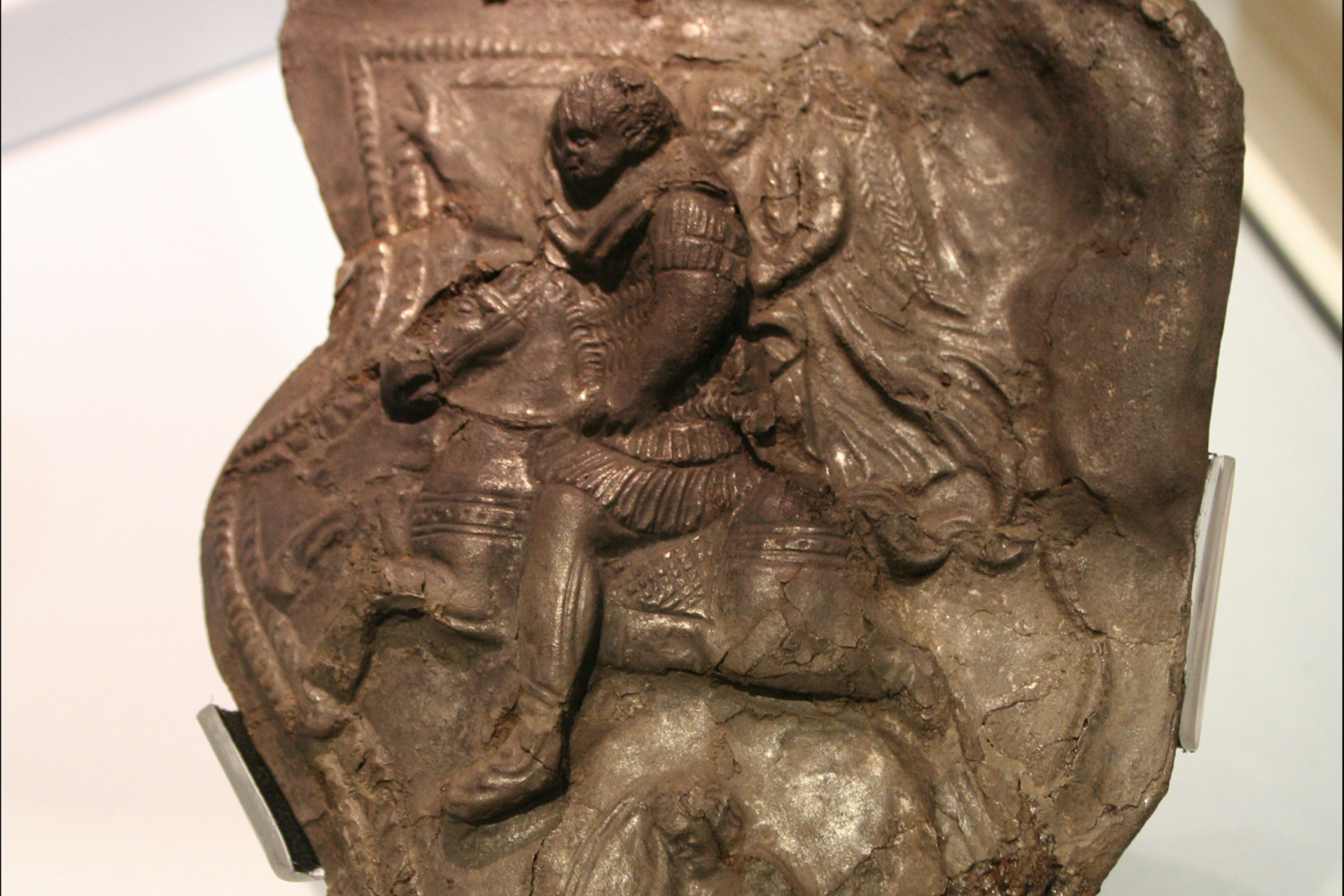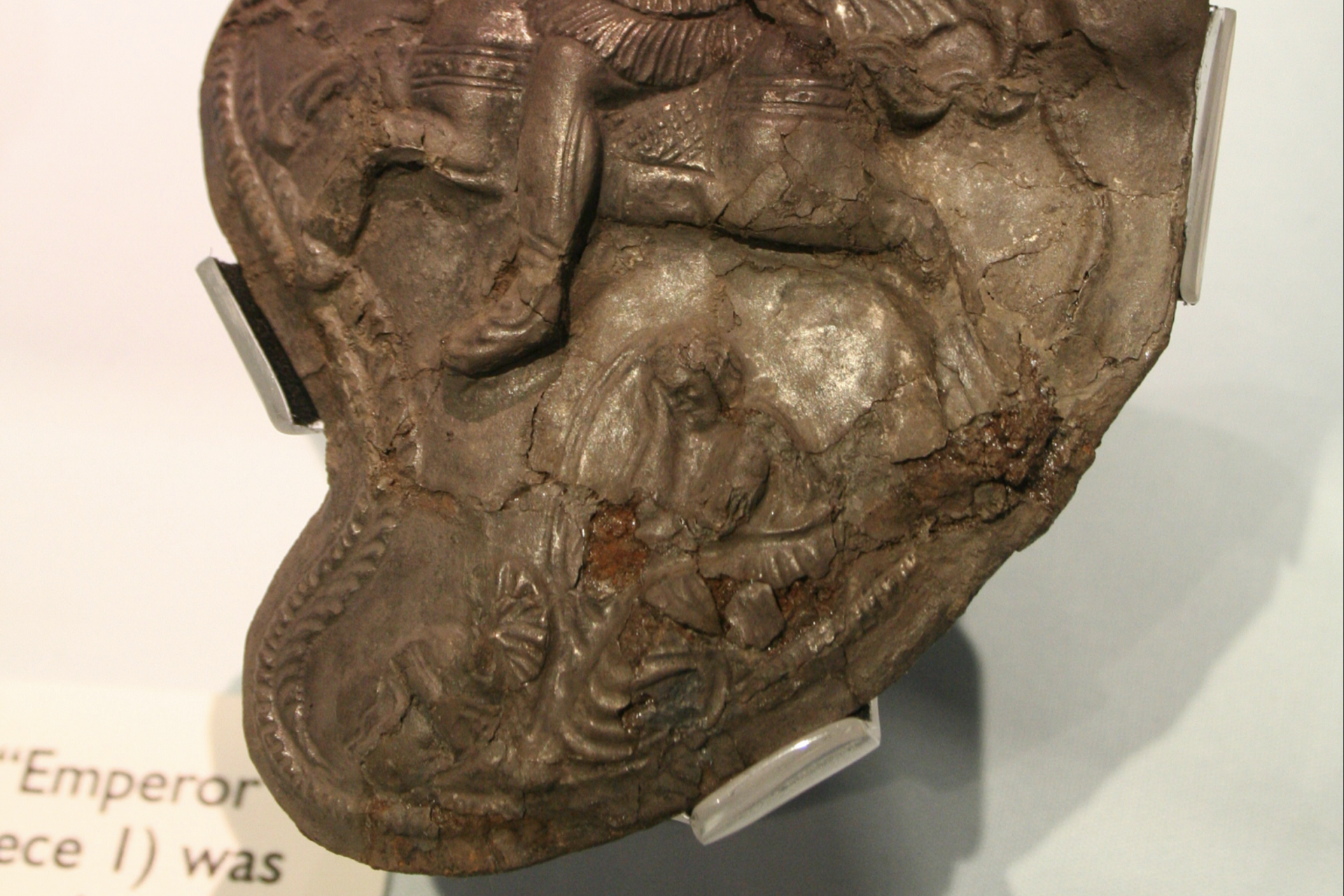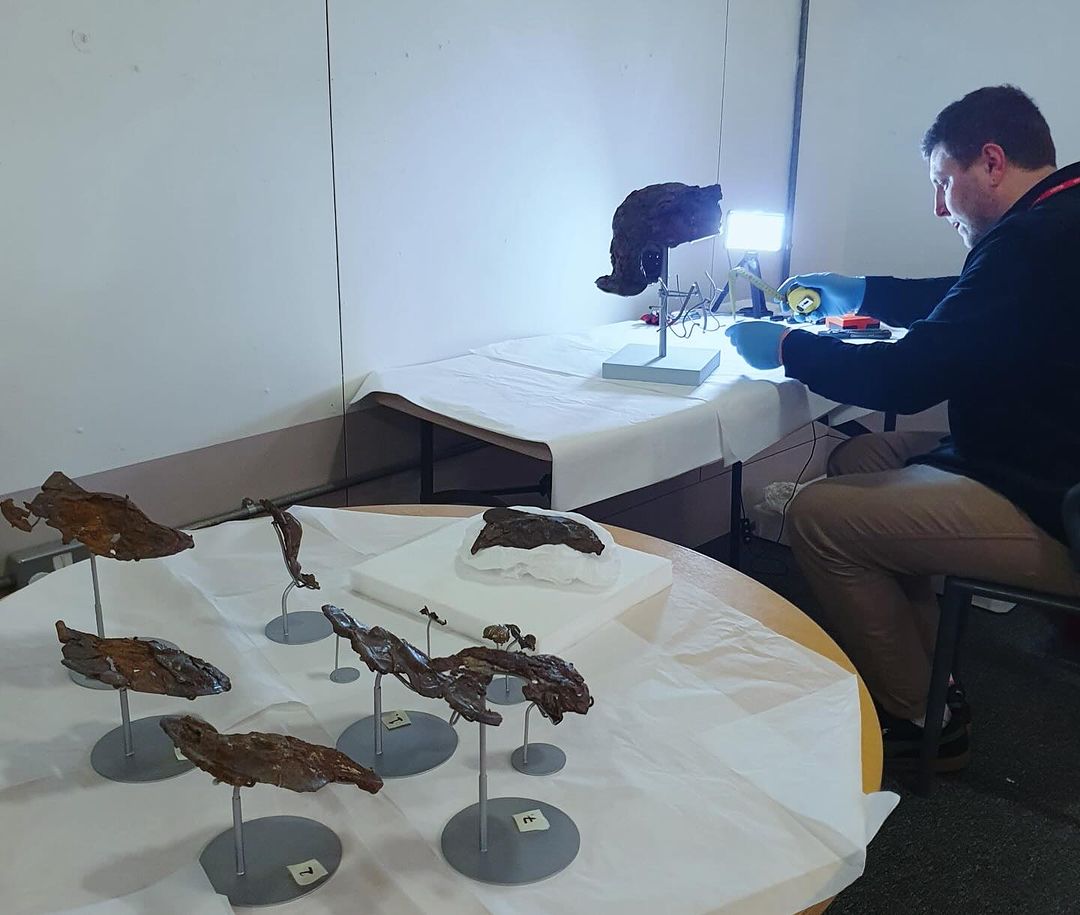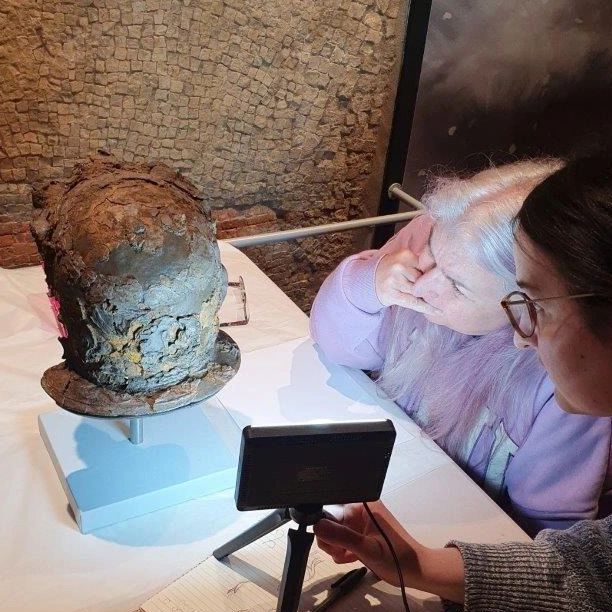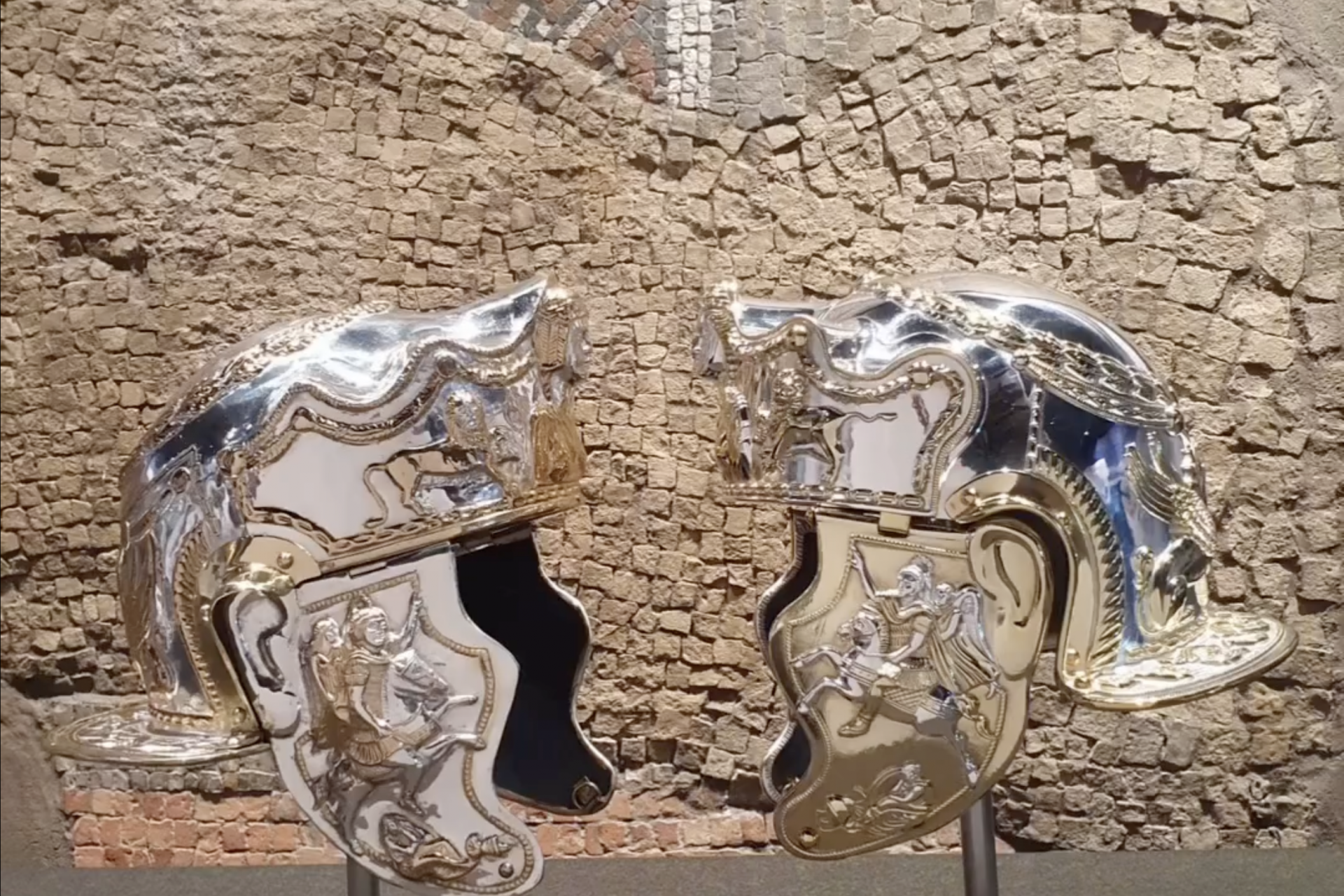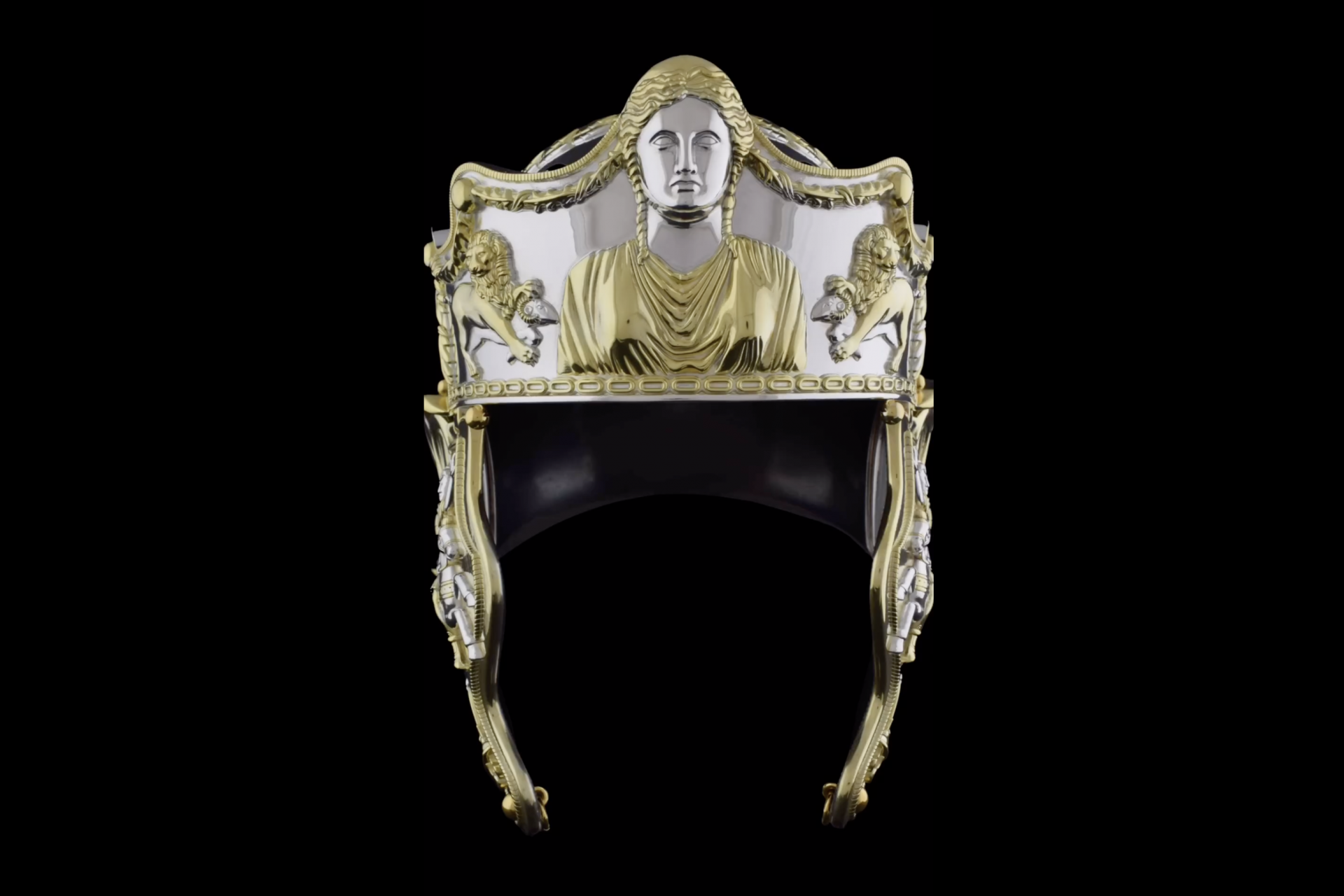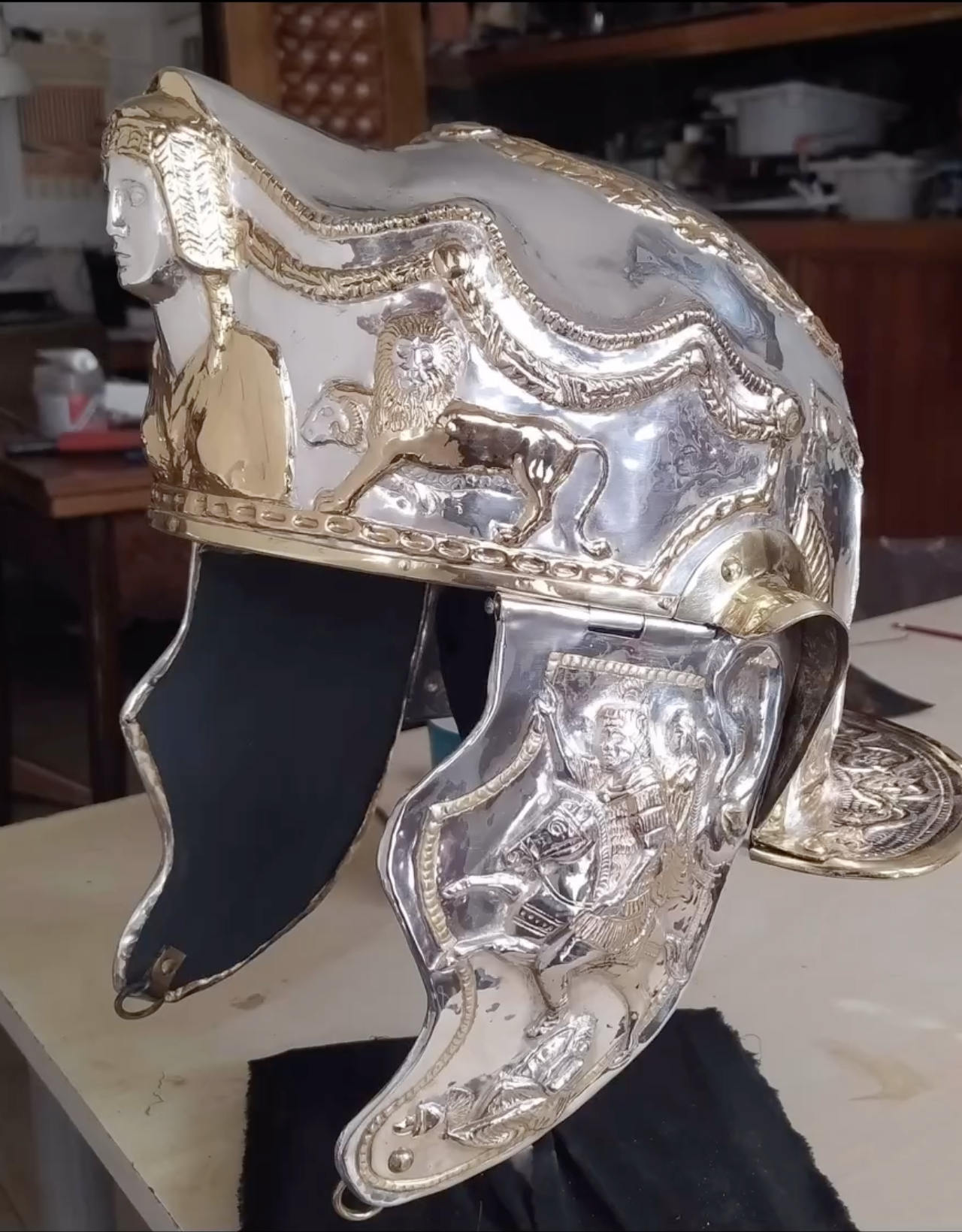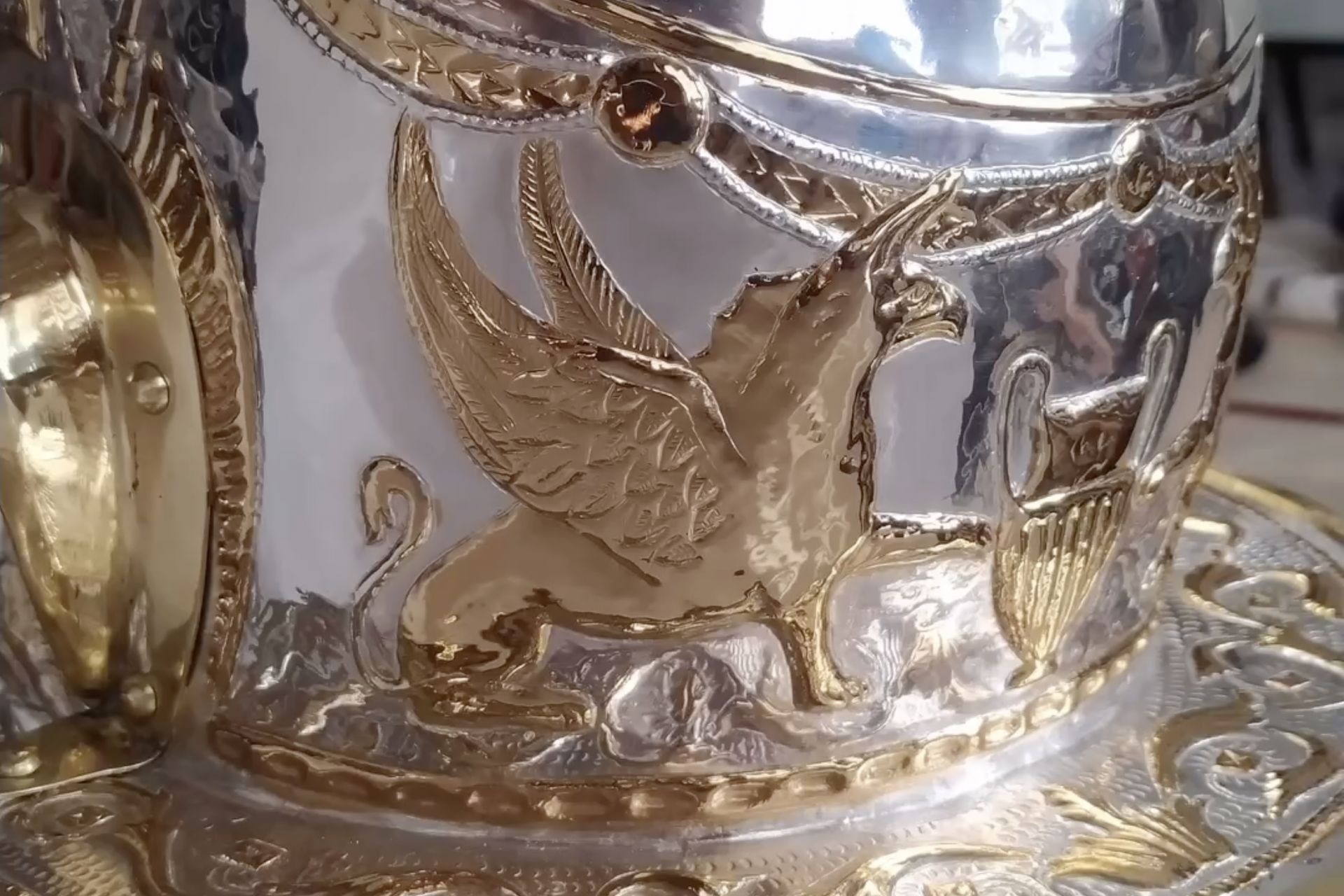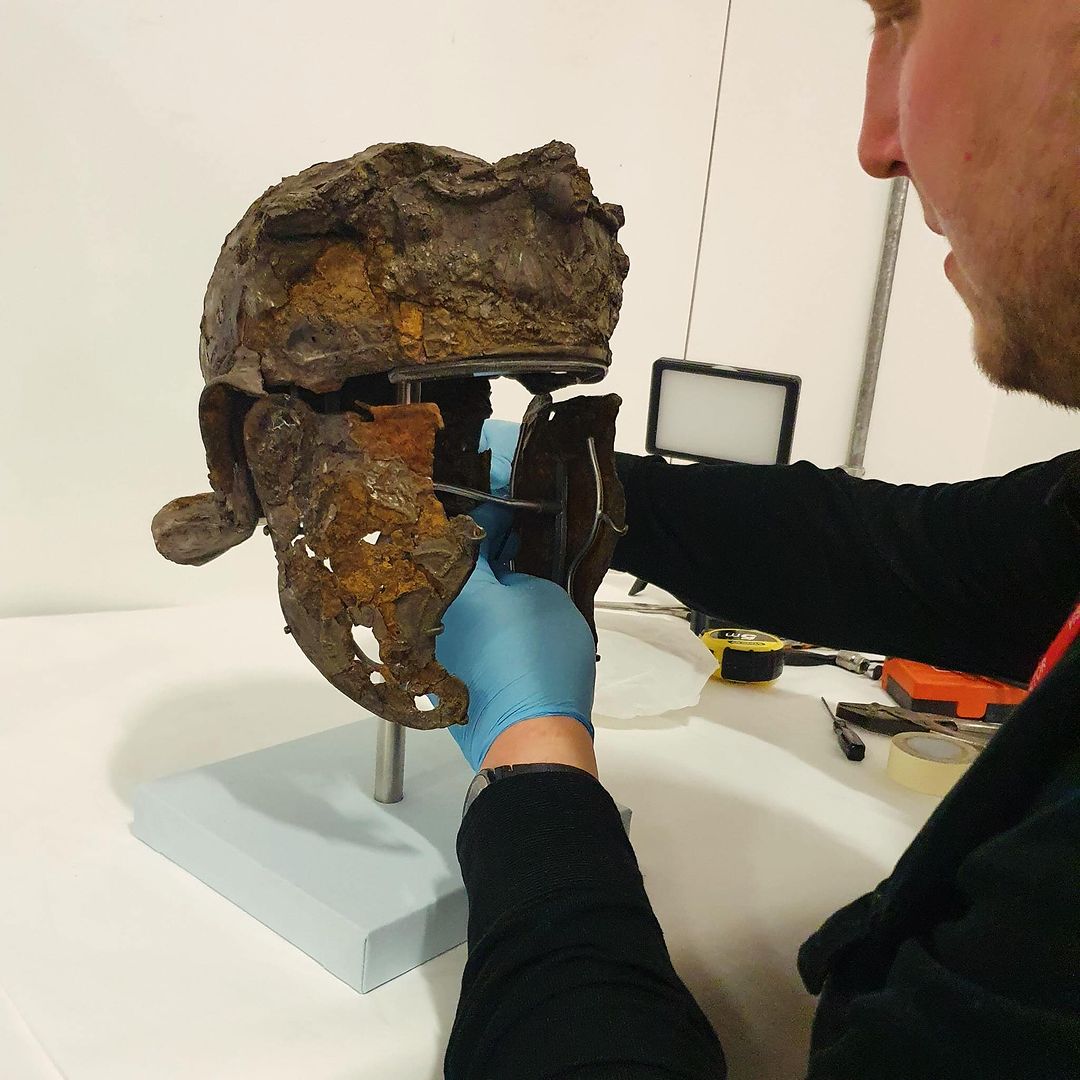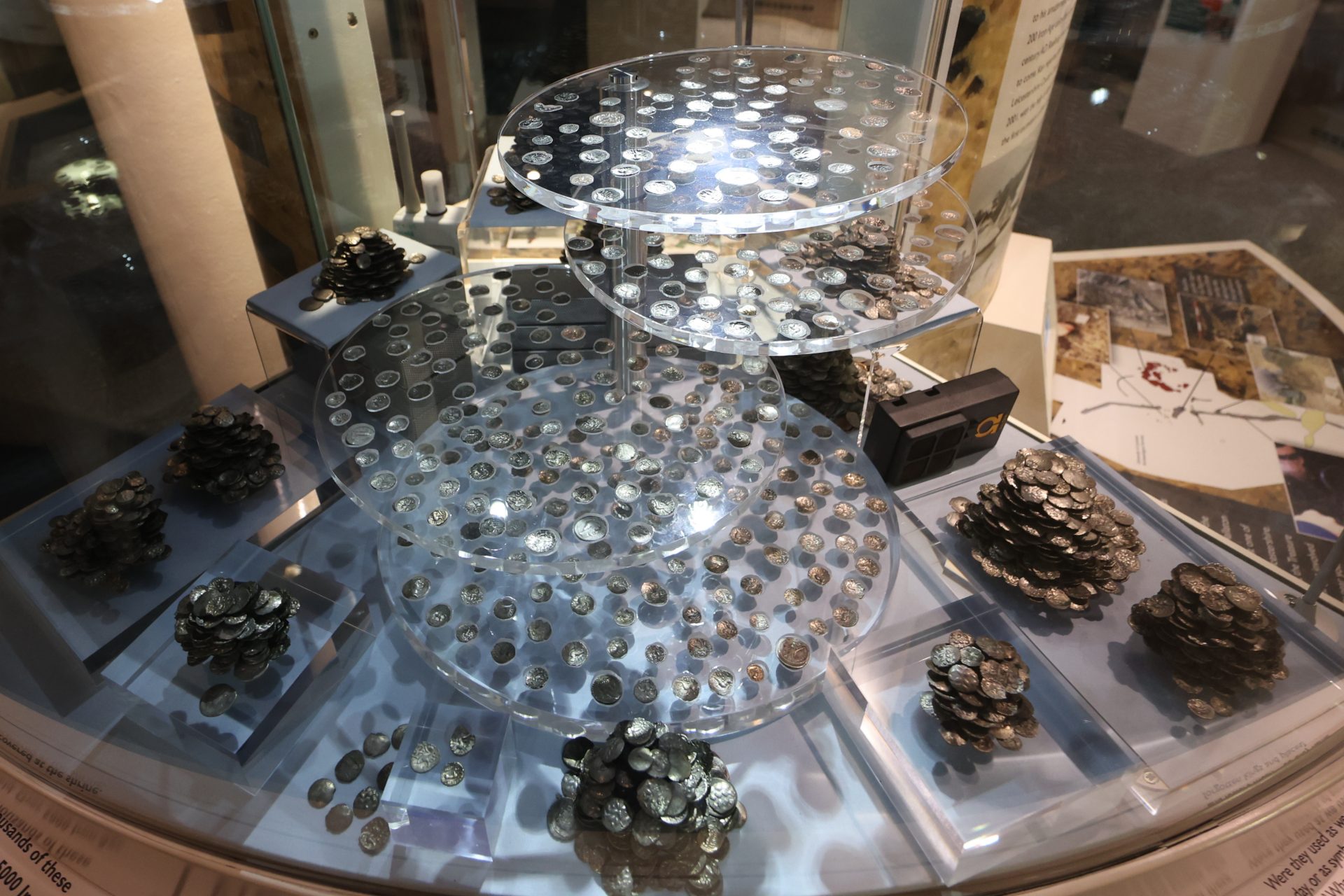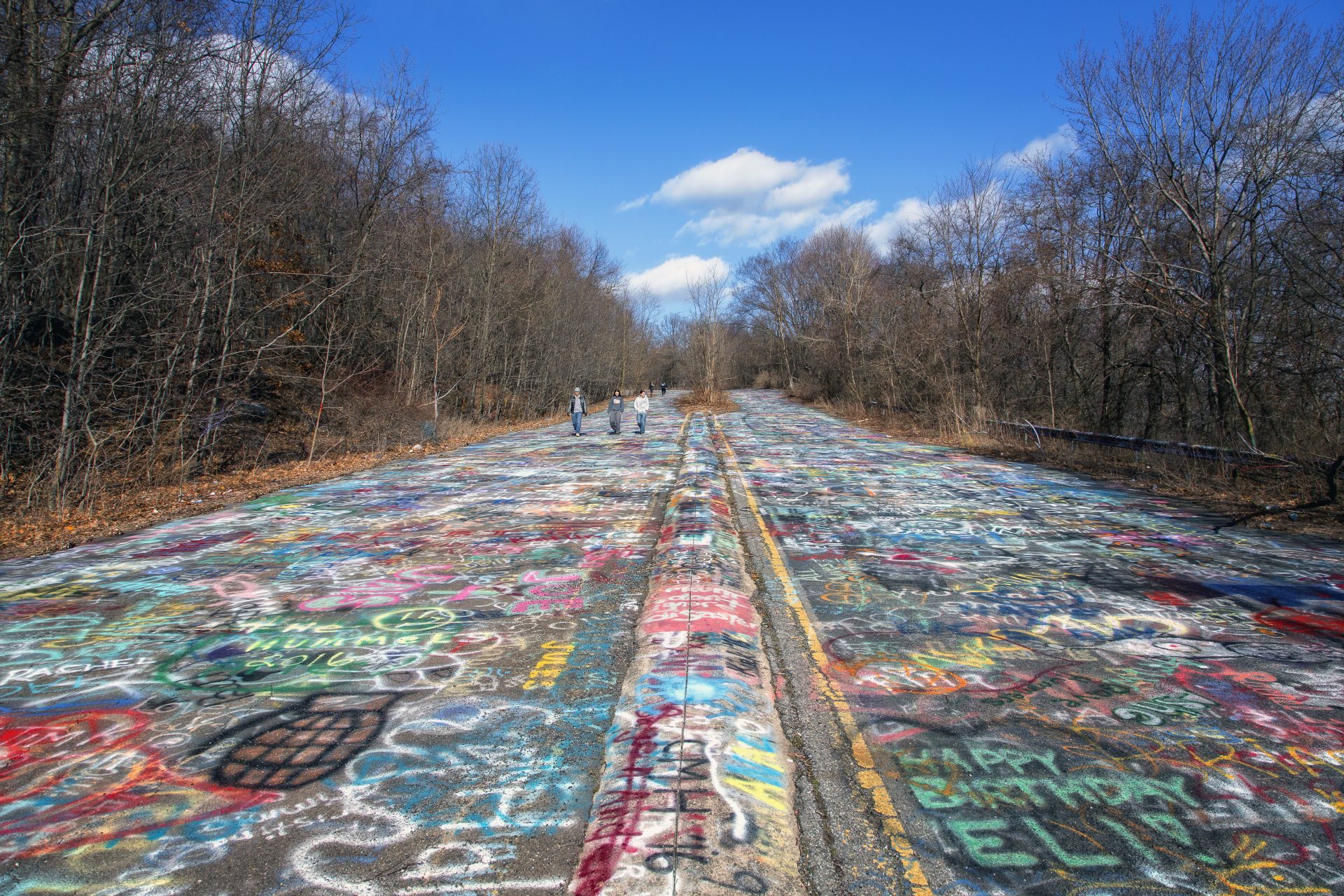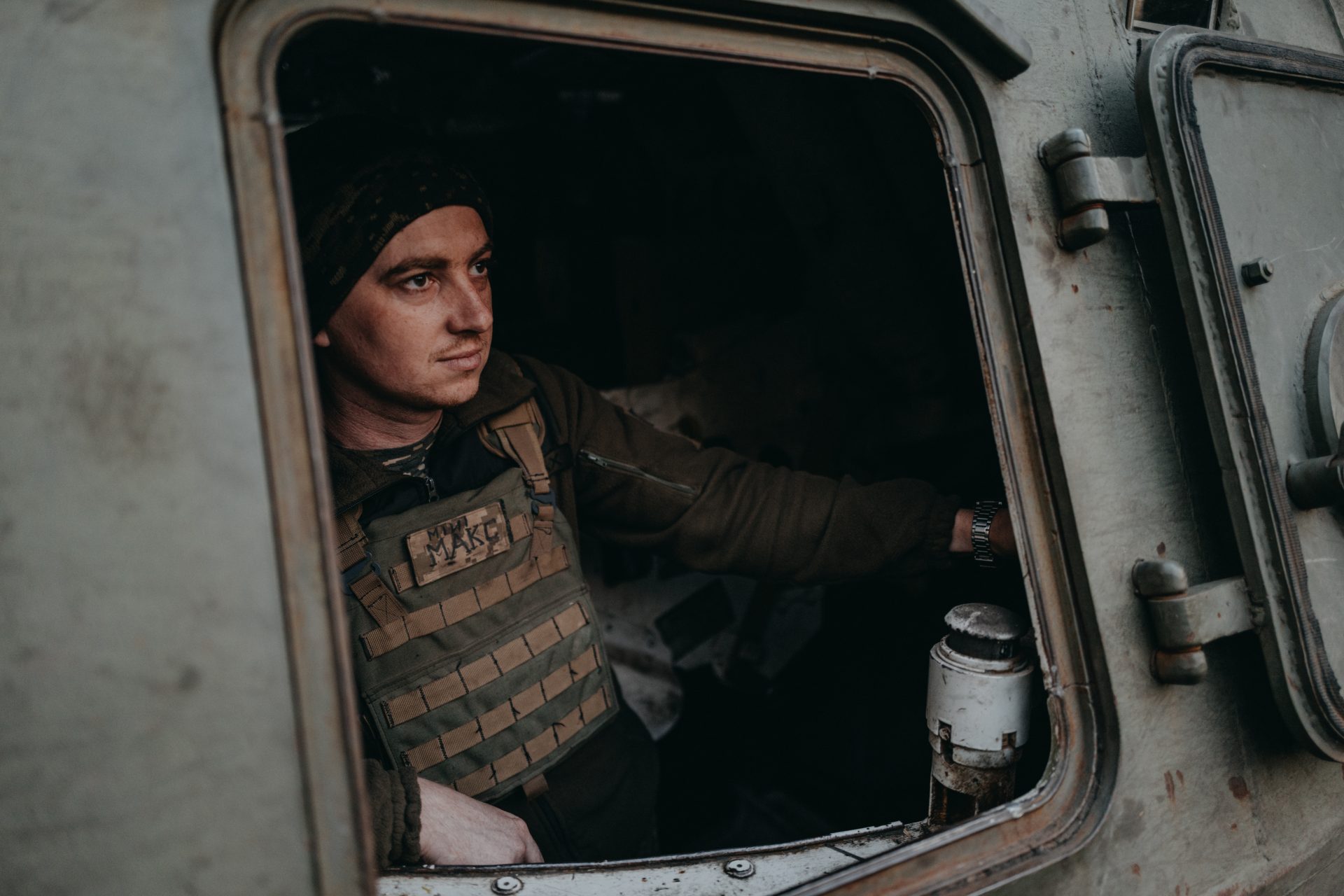This is what an ancient Roman cavalry officer's helmet looked like
Amateur archeologists searching a field in Britain over two decades ago unearthed what they initially thought was a rusty bucket, but the discovery would turn out to be an object of far more value: a two-thousand-year-old helmet.
Smithsonian Magazine reported the hunks of metal fragments were originally dismissed after they were found but a closer inspection later revealed the metal to be a helmet of a Roman cavalry officer from the occupation of Britain.
Photo Credit: Wiki Commons By Prioryman, Own Work, CC BY-SA 4.0
The ancient treasure was excavated in 2001 by the Hallaton Fieldwork Group as well as the University of in Hallaton, England, and the helmet went through “years of painstaking reconstruction work.”
Photo Credit: Instagram @leicestershire_collections
The Hallaton Helmet, as it has become known, suffered deterioration after it was buried, which makes sense. The helmet was made from iron but was covered in a thin layer of silver gilt for decoration.
Photo Credit: Instagram @leicestershire_collections
“The decorated silver-gilt plating is of the highest quality,” the Harborough Museum said about the rare Roman helmet, adding that it features “a bowl features a wreath made of leaves, the symbol of a military triumph”
Photo Credit: Instagram @leicestershire_collections
The peaked browguard of the helmet also portrayed the bust of a woman flanked by lions and rams. Originally, the helmet would have had two hinged cheekpieces to protect the sides and lower portion of the officer's face.
Photo Credit: Wiki Commons By Prioryman, Own Work, CC BY-SA 4.0
Both cheek pieces of the Hallaton Helmet were found but they are too fragile to reattach to the artifact. They also featured a decorative scene that depicted a Roman emperor on horseback with the Roman goddess Victory behind him.
Photo Credit: Wiki Commons By Prioryman, Own Work, CC BY-SA 4.0
Beneath the horse’s hooves is a cowering figure, which is most probably a defeated enemy according to the Harborough Museum. The helmet was buried at a native British shrine around the time that Britain was invaded by Rome in 43 AD.
Photo Credit: Wiki Commons By Prioryman, Own Work, CC BY-SA 4.0
The ancient cavalry helmet “is one of a handful of silver-plated helmets ever found in Europe,” the Curator of Archaeology at Leicestershire County Council museums Helen Sharp explained to BBC News, which makes it a rather rare and stunning find.
Photo Credit: Instagram @leicestershire_collections
“It is of extremely high status; it would have been worn by an extremely high-status officer, and it just shows how well-connected the Leicester area was at the time,” Sharp added, which makes one wonder who owned the helmet and why it was buried.
Photo Credit: Instagram @leicestershire_collections
The Hallaton Helmet spent years being restored by conservators. It is now on display at the Harborough Museum alongside replicas that show what the original helmet would have looked like to its owners.
Photo Credit: Instagram @leicestershire_collections
One replica was created by Leicestershire-based silversmith Rajesh Gogna, who used a scan of the original helmet to create a 3D-printed resin model that was decorated with silver and gold according to Smithsonian Magazine.
Photo Credit: Instagram @leicestershire_collections
The second replica was handcrafted by Italian archeologist Francesco Galluccio, who tried to recreate the Hallaton Helmet using the traditional methods that Roman artisans would have used to construct the cavalry helmet.
Photo Credit: Instagram @leicestershire_collections
“The work started over a year ago and was carried out with intense and continuous collaboration with the museum’s management, succeeding in creating an incredible result,” Galluccio told BBC News.
Photo Credit: Instagram @leicestershire_collections
"The reconstruction work was also a study moment that allowed us to focus on some still unclear aspects, in full cooperation with the museum's management with mutual exchange of experiences and knowledge," Galluccio added.
Photo Credit: Instagram @leicestershire_collections
The Hallaton Helmet is part of a larger collection of treasure that was discovered at the same Iron Age site in the 2000s. These treasures include five thousand gold and silver coins as well as a silver bowl, silver ingots, and animal bones.
Photo Credit: Wiki Commons By Geni, CC BY-SA 4.0
More for you
Top Stories



